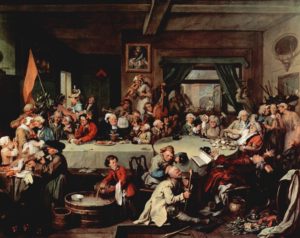Did you know that January 1 wasn’t always January 1? The grandparents and parents of our Regency heroes and heroines would have known a year when January 1 followed March 24. What’s more, that year they would lose a whole eleven days that September.
Until 1752 Britain and the British Empire, including the American colonies, still followed the Julian Calendar, established in the time of Julius Caesar, which made the year 365 days long and used leap years, but the calendar had an error that made the Spring equinox drift from its date of March 21. Two hundred years earlier, though, astronomers convinced Pope Gregory to change to a calendar based on the solar calendar that kept the equinox on March 21, important, because that was how they calculated when Easter would be.
Most of the Catholic countries adopted this Gregorian calendar in the 1500s, but Britain refused to switch to that “papist” system. You can imagine how confusing using two different calendars could be to travelers and traders.
And how disruptive changing the calendar would be to birthdays, festival days, paydays, dated contracts–any number of things.
In 1752 in Britain, March 25 became January 1, the start of a new year. But more adjustment was necessary to bring things in line with the Gregorian calendar, so Wednesday September 2, 1752, was followed by Thursday September 14, 1752, “losing” eleven days.
In 1752 William Willett of Endon bet that he could dance non-stop for twelve days. He started dancing on September 2, danced all night and stopped the next day–Sept 14. Twelve days! He won the bet.
The Whigs, who were more progressive and were convinced by the science of why the change was needed, supported the change. The conservative Tories were opposed and protested under the slogan, “Give Us Our Eleven Days.”

In 1755 Hogarth released a satirical print called An Election Entertainment depicting a tavern scene with some bawdy Whigs celebrating while Tories outside protested, “Give us our eleven days.” Apparently, though, citizens did not really riot in the streets believing they’d lost eleven days, as many believe. Hogarth’s print is thought to have contributed to this idea.
If you’d like to learn more about the differences in the Gregorian and Julian calendars, here’s the Wikipedia link.




